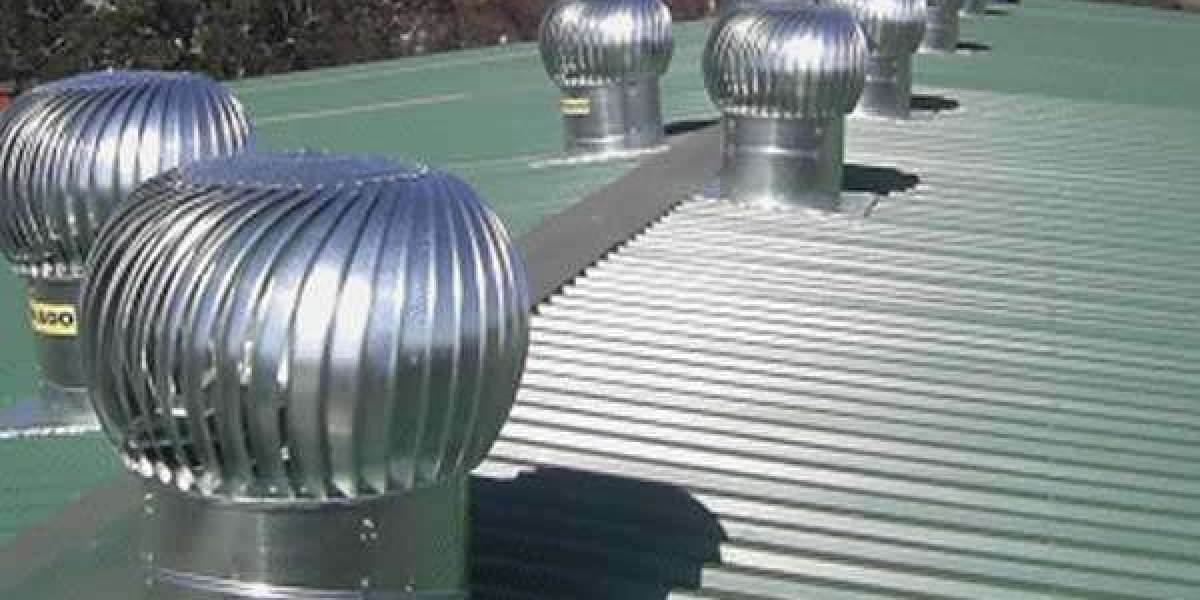In industrial settings like warehouses, where large volumes of goods are stored and moved, ventilation plays a critical role in maintaining a safe and healthy working environment. Poor air quality can lead to discomfort, illness, and even accidents, while effective ventilation systems can help prevent these issues and improve the overall workplace atmosphere. This article discusses the importance of warehouse ventilation and highlights key strategies to create a healthier and more productive environment for employees.
Why is Warehouse Ventilation Important?
Warehouse ventilation is typically large, often poorly ventilated spaces with high foot traffic, heavy machinery, and varying temperatures. These factors make proper ventilation essential for several reasons:
Air Quality and Employee Health:
- Dust and Particulates: Warehouses often store and handle materials like wood, metal, paper, and chemicals that can release dust or airborne particles. These particulates can irritate the respiratory system, especially if employees are exposed for extended periods.
- Chemical Fumes: Many warehouses deal with hazardous substances, including cleaning agents, fuels, and paints. If not properly ventilated, these chemicals can linger in the air and pose serious health risks, such as headaches, dizziness, or long-term respiratory damage.
- Carbon Dioxide (CO2): In poorly ventilated spaces, CO2 levels can build up, leading to fatigue, reduced concentration, and, in extreme cases, asphyxiation.
Temperature and Humidity Control:
- Warehouses are often subject to fluctuating temperatures and humidity levels, depending on geographic location and seasonal changes. Without proper ventilation, high humidity can lead to mold and mildew growth, compromising both the safety of the warehouse and the integrity of stored goods.
- Temperature extremes can create an uncomfortable work environment, which affects employee productivity and well-being. Effective ventilation can help moderate temperatures, providing a more consistent and comfortable workspace.
Fire and Explosion Prevention:
- Many warehouses store flammable materials or operate with heavy machinery that generates heat. A lack of proper airflow can increase the risk of fire or explosion due to the accumulation of flammable vapors or gases. Good ventilation helps prevent these risks by dispersing potentially hazardous air before it can reach dangerous levels.
Key Strategies for Effective Warehouse Ventilation
To ensure the health and safety of workers, warehouses need to incorporate effective ventilation strategies. Here are some key approaches:
1. Natural Ventilation
Natural ventilation relies on passive systems, such as open windows, vents, skylights, and the building's design, to allow fresh air to enter and stale air to exit. While this method is energy-efficient and cost-effective, it requires careful planning to ensure consistent airflow.
- Cross-Ventilation: Positioning vents or openings on opposite sides of the warehouse can allow for cross-ventilation, where fresh air enters from one side and stale air exits from the other. This creates a natural airflow that can help regulate temperature and humidity.
- Skylights and Roof Vents: Installing skylights and roof vents can provide an additional source of fresh air, especially in large, high-ceilinged warehouses. Hot air rises, so roof vents can help expel heat while letting in cooler air from the outside.
However, natural ventilation may not always provide adequate airflow, particularly in regions with extreme weather conditions, so it is often paired with mechanical systems.
2. Mechanical Ventilation
Mechanical ventilation systems use fans and ducts to move air efficiently through the warehouse. This method is highly effective in controlling air quality, temperature, and humidity.
- Exhaust Fans: These fans are designed to remove stale air and airborne pollutants from the warehouse. Exhaust fans can be installed in strategic locations, such as near high-traffic areas or where heat and fumes are likely to accumulate.
- Supply Fans: To ensure a steady supply of fresh air, supply fans can push outdoor air into the warehouse. This system can work in tandem with exhaust fans to create a continuous airflow.
- HVAC Systems: Heating, ventilation, and air conditioning (HVAC) systems are common in warehouses with specific temperature requirements. HVAC systems filter air to remove dust and allergens, regulate temperature, and ensure optimal humidity levels. This is particularly beneficial in temperature-sensitive environments like food storage or warehouses with sensitive materials.
3. Humidity Control
High humidity can lead to mold, mildew, and condensation in warehouses, which can damage goods and create an unhealthy environment for workers. Managing humidity is especially important in warehouses that store perishable goods or chemicals that are sensitive to moisture.
- Dehumidifiers: Industrial-grade dehumidifiers can be used to remove excess moisture from the air, maintaining a balanced humidity level and preventing mold and rust from forming.
- Airflow Regulation: Proper ventilation can also help control humidity levels by encouraging air circulation, especially in areas where moisture tends to accumulate, such as near loading docks or refrigeration units.
4. Air Filtration Systems
Air filtration systems can be added to both natural and mechanical ventilation setups to remove particulates, dust, and chemical fumes from the air. This is especially important in warehouses that deal with harmful substances.
- HEPA Filters: High-Efficiency Particulate Air (HEPA) filters are designed to capture small particles, including dust, pollen, and mold spores. These filters can be integrated into HVAC or exhaust systems to improve air quality.
- Activated Carbon Filters: These filters absorb gases and chemicals, including volatile organic compounds (VOCs), from the air. This type of filtration is particularly useful for warehouses that handle chemicals, solvents, or other toxic substances.
5. Temperature Regulation
Maintaining a comfortable temperature is crucial for both employee productivity and the protection of goods in the warehouse. Without adequate ventilation, temperature extremes can create a challenging work environment.
- Evaporative Coolers: In regions with hot, dry climates, evaporative coolers (also known as swamp coolers) can be used to lower the temperature by adding moisture to the air.
- Insulation: Proper insulation can help regulate temperatures and reduce the reliance on mechanical cooling or heating systems. Insulation also minimizes the impact of external weather conditions on the internal environment.
6. Routine Maintenance and Monitoring
Warehouse ventilation systems need regular maintenance to ensure optimal performance. Dust, debris, and grease can accumulate in ducts, vents, and filters, reducing airflow and efficiency.
- Cleaning Air Ducts and Vents: Regular cleaning of air ducts, exhaust fans, and vents ensures that air can flow freely throughout the warehouse.
- Monitoring Air Quality: Installing air quality monitoring devices can provide real-time data on CO2 levels, humidity, temperature, and pollutant concentrations. These devices can help warehouse managers make adjustments to ventilation systems as needed.
Conclusion
Proper ventilation is essential to maintaining a healthy, safe, and productive work environment in warehouses. By ensuring good air quality, controlling temperature and humidity, and preventing the buildup of hazardous substances, warehouse managers can protect their employees' health and well-being. Implementing a combination of natural and mechanical ventilation systems, along with air filtration and humidity control, will lead to improved working conditions, fewer health issues, and higher employee productivity. Regular maintenance and monitoring of these systems are also key to long-term effectiveness. Ultimately, investing in effective warehouse ventilation systems will create a healthier and more efficient space for everyone involved.






